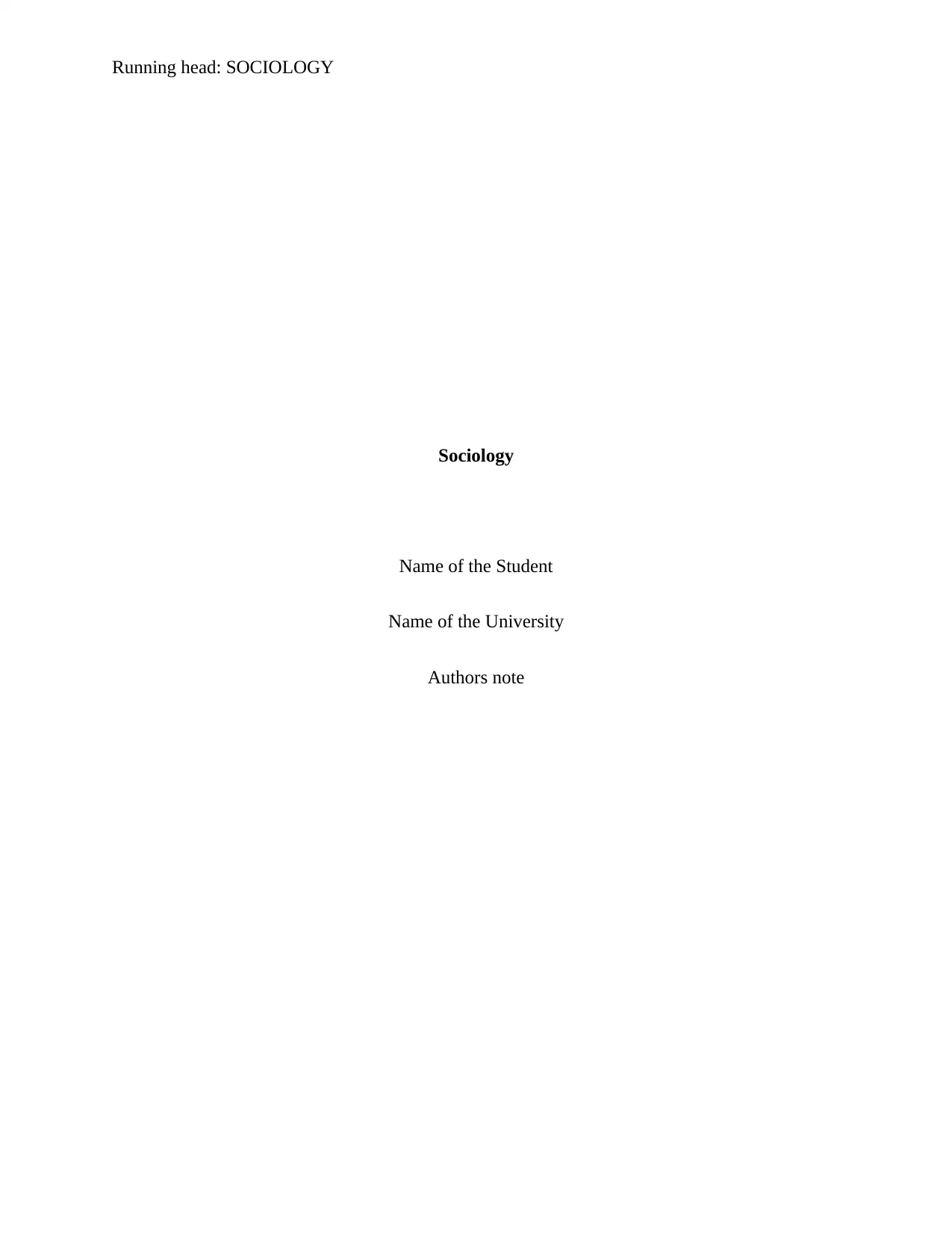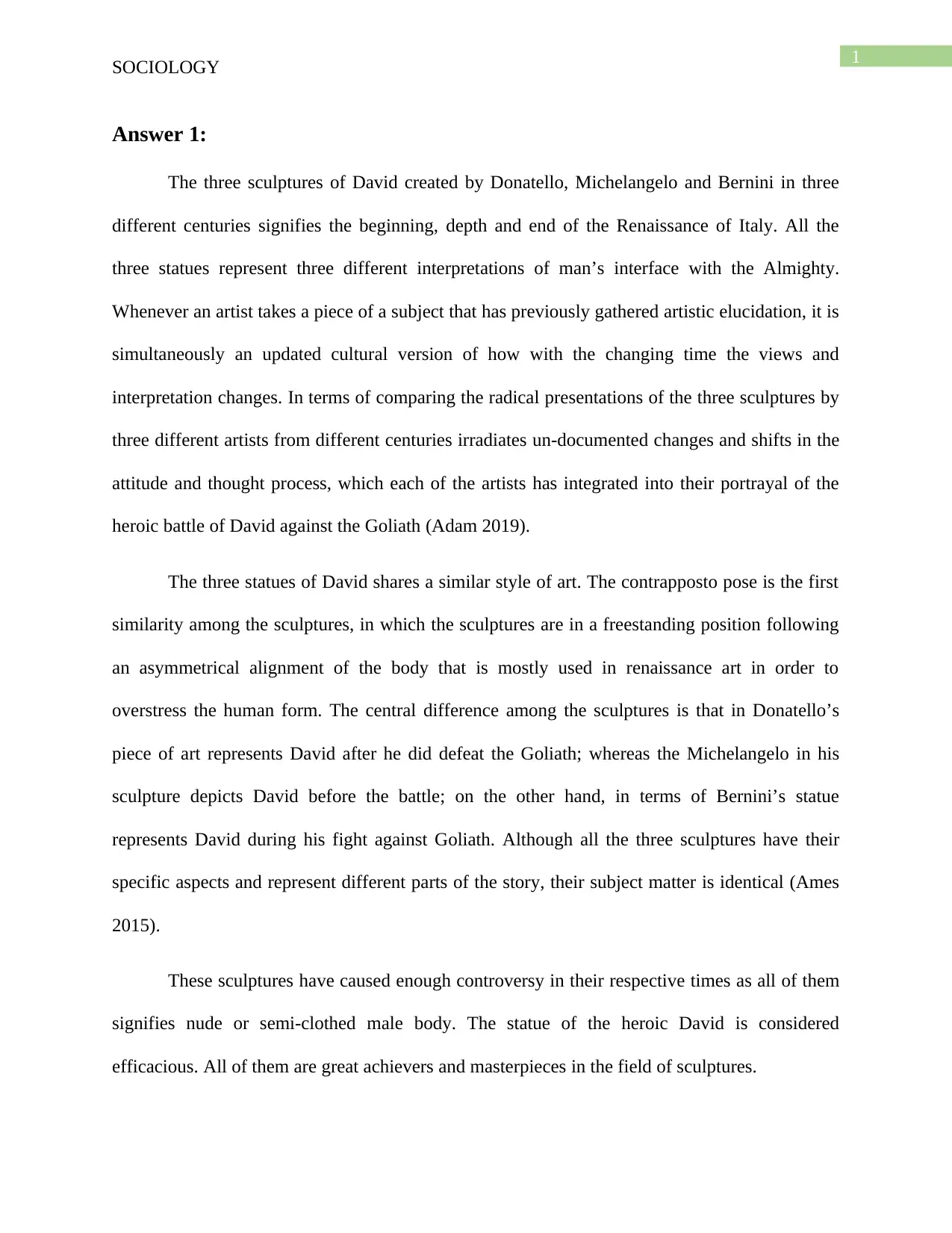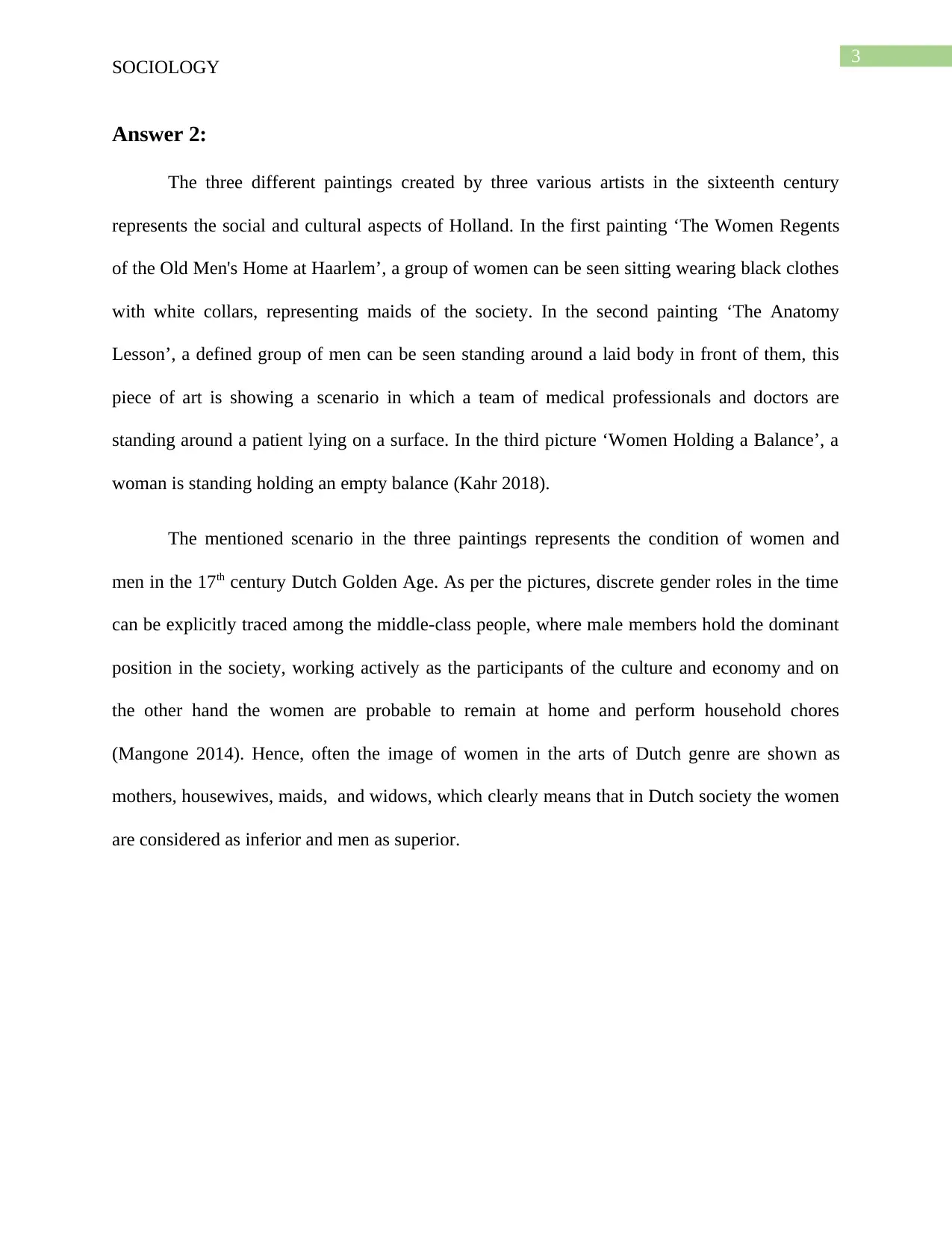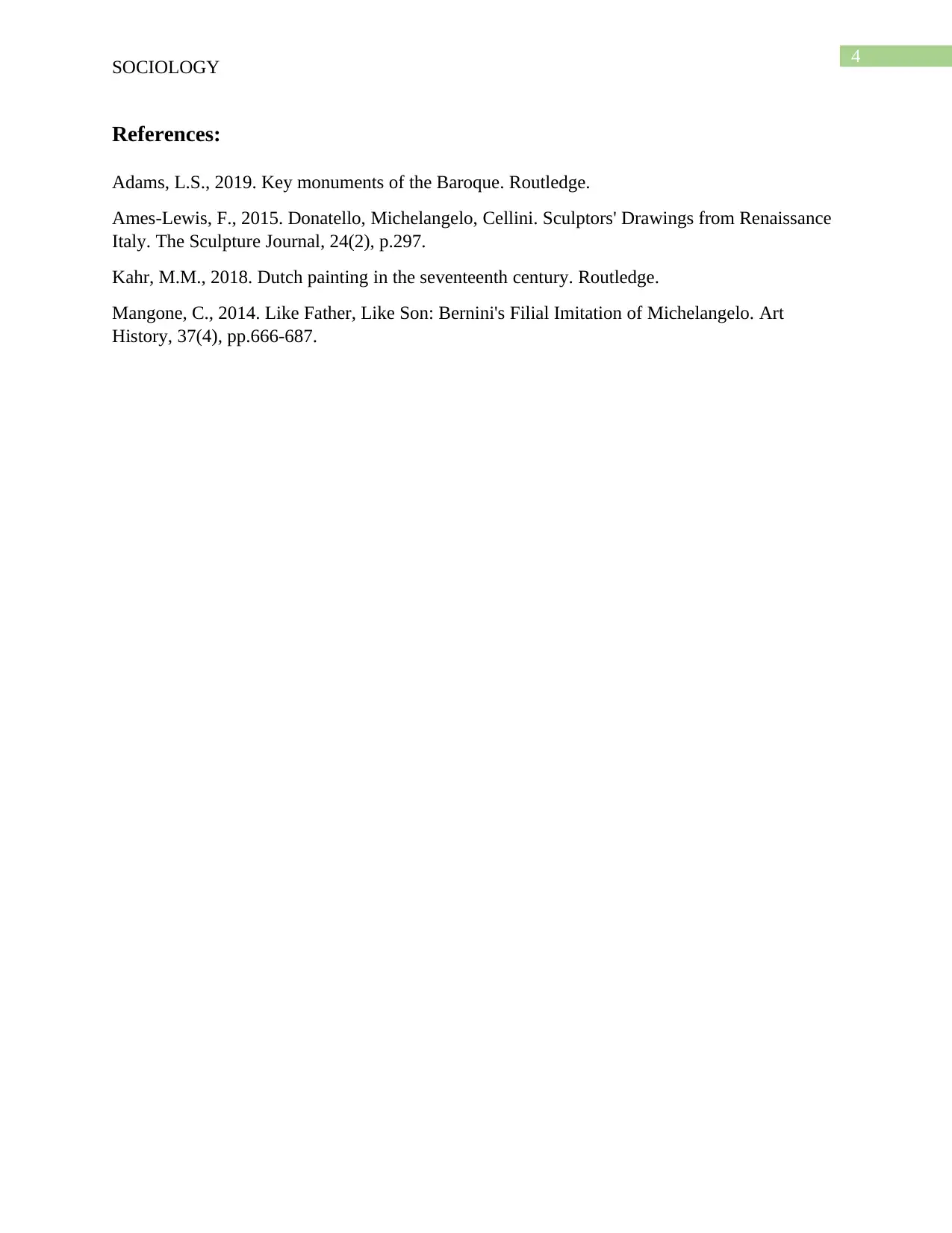Sociology Assignment: Analysis of Renaissance and Dutch Art Forms
VerifiedAdded on 2022/08/12
|7
|698
|18
Essay
AI Summary
This sociology assignment analyzes and compares two distinct art forms: Renaissance sculptures and Dutch paintings. The first part of the assignment focuses on three sculptures of David created by Donatello, Michelangelo, and Bernini, examining how these works reflect changing interpretations of man's relationship with the divine and artistic styles across different centuries. The analysis highlights similarities in artistic style, such as the contrapposto pose, while contrasting the specific moments in David's story each sculpture depicts. The second part of the assignment shifts to Dutch paintings of the 16th century, discussing how these artworks represent the social and cultural aspects of Holland, particularly focusing on gender roles and societal norms of the time. The paintings depict scenarios of women regents, medical lessons, and women holding balances, offering insights into the roles and statuses of men and women in Dutch society during the Dutch Golden Age.
1 out of 7











![[object Object]](/_next/static/media/star-bottom.7253800d.svg)